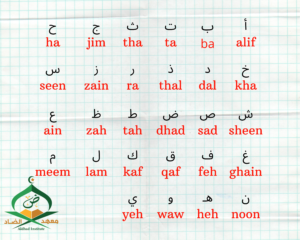Introduction
The Arabic alphabet has 28 letters, all representing standards, and is written from right to left. Twenty-two of the letters are those of the Semitic alphabet from which it descended, changed only in the shape, figures and the arrangements of the letters throughout the sentences, and the remaining six letters represent sounds not used in the languages written in the earlier alphabet. The configuration of each letter relies on its position in a word—entry, medial, and the end. There is a fourth form of the letter when it is written alone this later kind of figures used only for academic researches not for communications either verbal nor written aspects. The letters alif, waw, and ya’a (standing for the glottal stop, w, and y, respectively) are used to represent the long vowels a, u, and i. A set of diacritical marks developed in the 8th century CE are sometimes used to represent short vowels and certain grammatical endings otherwise left unmarked.

Chirography:
Two major types of Arabic script exist. Kūfic, a thick, bold monumental style, was developed in Kūfah, a city in Iraq, toward the end of the 7th century CE. It was used chiefly for inscriptions in stone and metal but was also employed sometimes to write manuscripts of the Quran. A very pretty monumental script, it has passed out of use, except in cases in which more cursive scripts cannot be used. Naskhī, a cursive script well adapted to writing on paper, is the direct ancestor of modern Arabic writing. It originated in Mecca and Medina at an early date and exists in many complex and decorative variant forms.
The Arabic Vowels are:
Three vowels in Arabic called ḥarakāt which means “structures or movements”. They can be both short and long. The three long vowels are considered as letters in their full right and feature. While their corresponding short vowels known as diacritic signs are symbols written either above or below a specific letter. There is also a concept of “vowel standard” which can be interpreted as the different ranges of sounds each vowel can produce in connection with other letters. Similar to the way “g” can sound very different depending on its position in the world, like in “ge” or “ga”.
Short Vowels:
These three short vowel signs are:
Fathaah, dommah, and kesrah.
